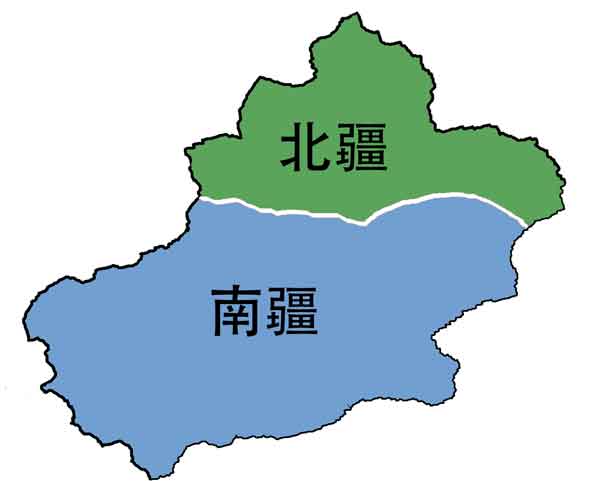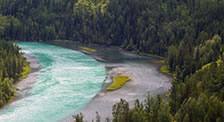Amazing Petroglyphs Re-Discovered in Xinjiang, China!
Kangjiashimenzi (康家石门子) is a collection of ancient petroglyphs that were carved into the side of a massive red-basalt rock in China’s remote region of Xinjiang. These carvings have been dated to about 2000 B.C. and they are believed to be the world’s earliest recordings of an ancient fertility ritual.
Some call it an archeological wonder. Others have jokingly labeled it “prehistoric porn”. You decide for yourself :)
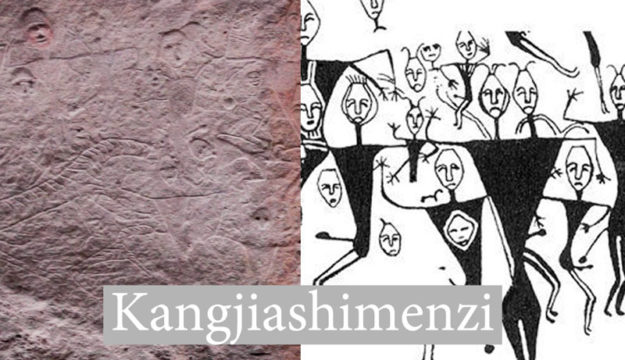
This isn’t the kind of place you’ll find listed in any China travel guide book or even on most maps of the region.
I had read about these petroglyphs discovered in western China a few years ago and quietly added them to my growing Xinjiang bucket list.
And for those of you who might not know, a petroglyph is a rock carving made by pecking directly on the rock using some sort of chisel and hammer.
It wasn’t until this summer that I decided to see if I could find this place. So I jumped in my car for yet another fun Xinjiang road trip (check out my first XJ road trip here).
Re-Discovering Xinjiang’s Petroglyphs [Video]
As you’ll see in the video below, I was in a race to see if I could find this place before the sun set.
I ended up getting there so late that I decided to sleep outside instead of trying to look around for a hotel that was most certainly a couple hours drive away!
Check out more great Xinjiang videos on the FarWestChina YouTube Channel!
That’s what it looked like (and how remote it was!), but before I took the trip, I did my research to find out exactly what these China petroglyphs actually were.
What was this place known as Kangjiashimenzi?
What is Kangjiashimenzi?
Kangjiashimenzi (康家石门子) is a collection of Eurasian art that involves 83 figures participating in some odd type of sex ritual.
The rock is located within the Tianshan range a few hours west of the Xinjiang capital of Urumqi and was first discovered by Chinese archeologist Wang Binghua.
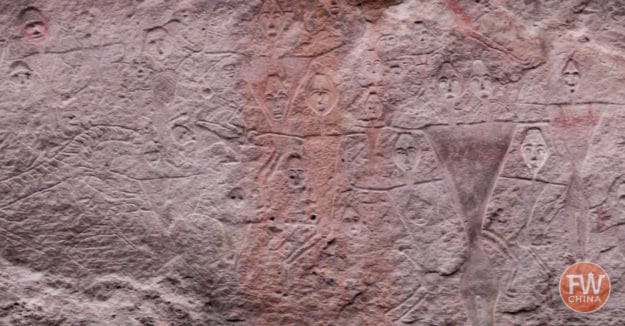
Almost a decade later, American archeologist Dr. Jeannine Davis-Kimball studied the location in depth. It is from her writings and drawings that we get most of our current understanding of this ancient petroglyph.
It’s a good thing, too. To my untrained eye, these carvings looked like nothing more than fancy stick figures and a few animals.
Little did I know that these petroglyphs are emphatically ithyphallic (a fancy word for ‘erect penis’)!
Can you see it?
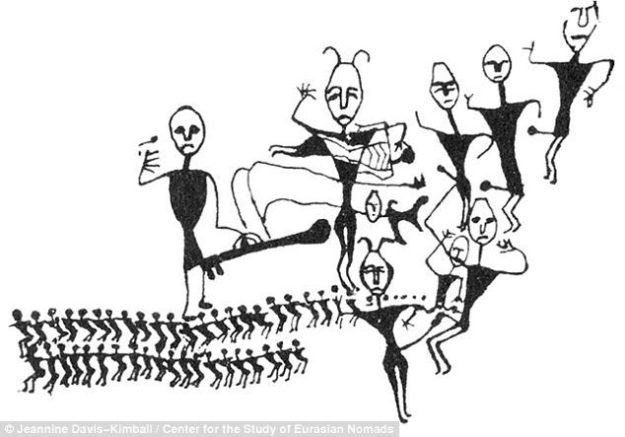
In fact, four different scenes from this fertility ritual are depicted on the side of the rock, which starts about 30 feet above the ground and progress downward.
Where is this Xinjiang Petroglyph?
Jeannine refers to Kangjiashimenzi as “monumental art located in an awe-inspiring locale”…
…and I agree with her.
Facing away from the rock carvings, I could see layer after layer of tree-covered hills that extend far into the distance.
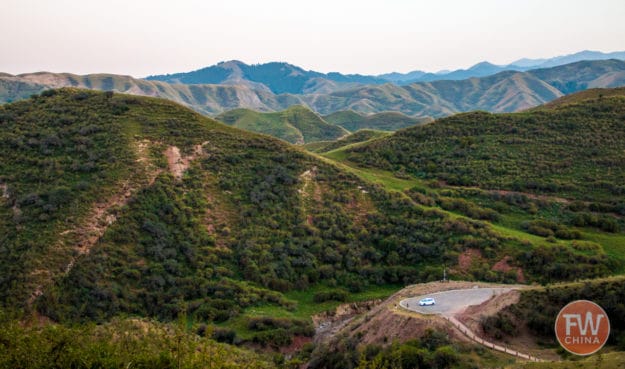
Kangjiashimenzi is buried deep in the heart of Xinjiang’s Tianshan range, a good 4-5 hours west of the Xinjiang capital of Urumqi.
After leaving the comfort of the smooth G30 national highway, I followed along the little-known Taxi River (塔西河) for more than an hour as I drove deeper into the mountains.
There is no paved road that leads here, only a series of gravel paths that twist and turn through the mountains. There are no signs to offer direction, so I was left to rely on an outdated map I hoped was accurate.
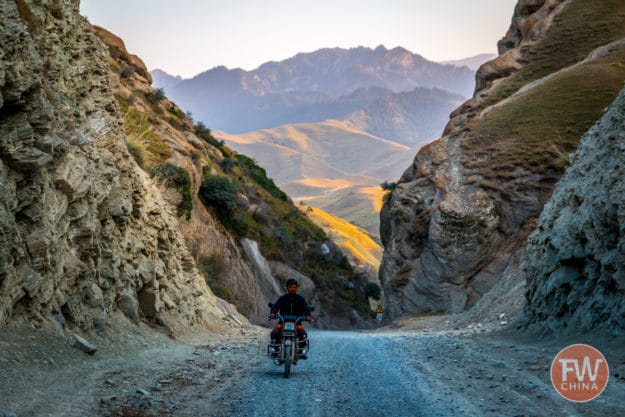
Nobody I know in Xinjiang had ever been here or even heard about it.
Honestly, I had no idea if I would even be able to find this place.
Dreams of Archaeological Tourism
Turning off the gravel road, I came up to a run-down building that looked like it was once a small tourist centre. The place was a bit creepy but it was the first positive indication that I was headed in the right direction.
One sign near the entrance informed me that tickets to see the petroglyphs were 20 RMB. There wasn’t a single soul around to collect the money.
A nearby parking lot was overgrown with weeds.
It’s obvious that someone had attempted to turn Kangjiashimenzi into a tourism attraction following its discovery. The project was doomed from the start, though, not just because of a remote location but also because of politics.
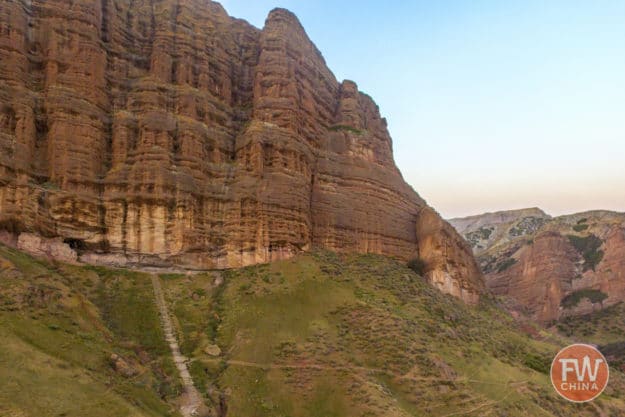
You see, the Kangjiashimenzi figures were determined not to be Han Chinese in origin, a fact which seems to contradict China’s historical claim to Xinjiang.
It may not seem like a big deal to us, but this simple contradiction was enough to cause Chinese officials to limit research and access to Kangjiashimenzi for over a decade.
Keep in mind that during this same period of time, China was facing a similar problem with all of the mummies it was digging up in Xinjiang.
It wasn’t until genetics studies confirmed that Xinjiang’s earliest inhabitants were neither Chinese NOR Uyghur in ethnicity that the government breathed a sigh of relief. Research could continue and access to these historical relics was granted.
The mummies fared just fine.
Places like Kangjiashimenzi became a ghost town.
Carvings on the Wall
Today, a small green fence is the only protection offered these 4,000 year-old petroglyphs in western China.
Standing up against this fence, I initially had a difficult time locating the carvings. Like I stated earlier, I’m not an archeologist and had no idea what I was looking for.
But as I looked closely, the figures became clearly distinguishable. What surprised me most was the size of the carvings. I expected a few inches or perhaps a foot or two in height.
I came across figures that were taller than I was – up to 9.5 feet!
All of the sudden, the entire rock face came alive with figures dancing all around! The hours of driving were worth the effort.
How many times can we get up close and personal with art that was created 4,000 years ago?
Final Thoughts | Xinjiang’s Petroglyphs
Clearly this isn’t a place that the average tourist will have an opportunity to visit. However, it’s yet another indication of the diversity and complexity of Xinjiang’s history.
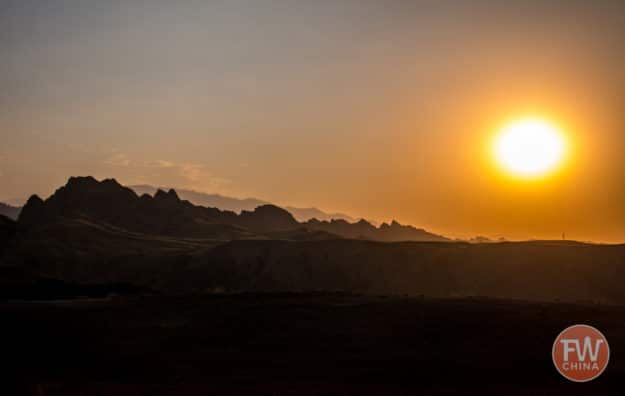
It’s also a great reminder to me of why I love exploring Xinjiang: ancient history, beautiful scenery, the thrill of discovery…and prehistoric porn.
What more could you ask for?






